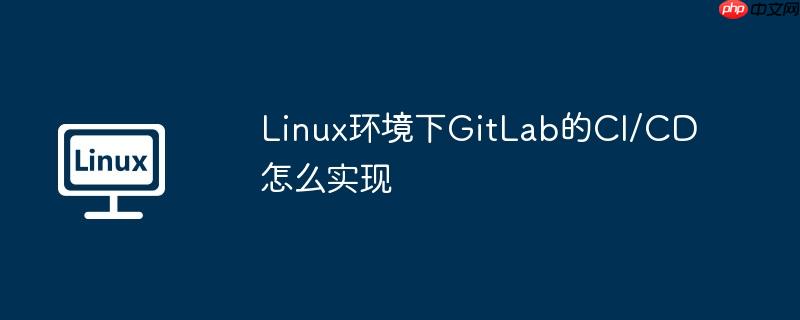
在Linux系统中,GitLab的CI/CD功能可以通过以下流程来完成:
GitLab Runner是负责执行CI/CD工作的服务端程序。首先需要为其安装并设置一个或多个Runner。
可以采用多种方式安装GitLab Runner,如包管理器、Docker或是手动安装。
以Ubuntu为例使用包管理器安装:
<code>sudo apt-get update sudo apt-get install gitlab-runner</code>
利用Docker安装:
<code>docker run -d --name gitlab-runner --restart always \ -v "/srv/gitlab-runner/config:/etc/gitlab-runner" \ gitlab/gitlab-runner:latest</code>
使用以下命令注册Runner到GitLab实例:
<code>sudo gitlab-runner register</code>
依据提示填写GitLab实例的URL及注册Token。
在项目的根目录下创建名为.gitlab-ci.yml的文件,此文件用于定义CI/CD的工作流。
<code>stages: - build - test - deploy <p>build_job: stage: build script:</p><ul><li>echo "Building the project..."</li><li>mkdir build</li><li>cd build</li><li>cmake ..</li><li>make</li></ul><p>test_job: stage: test script:</p><ul><li>echo "Running tests..."</li><li>ctest</li></ul><p>deploy_job: stage: deploy script:</p><ul><li>echo "Deploying the project..."</li><li>scp -r build/* user@remote_server:/path/to/deploy</code>
可在GitLab项目设置里配置CI/CD变量,这些变量可直接在.gitlab-ci.yml文件中引用。
当代码推送到GitLab仓库时,GitLab Runner会自动识别变更并执行.gitlab-ci.yml文件里的管道。
可在GitLab项目页面的“CI / CD” -> “Pipelines”部分检查管道的运行情况及日志。
若管道执行失败,可通过查看日志排查问题,日志中会展示每项任务的输出和错误信息。
还可进一步实现部署过程的自动化,比如运用SSH、Docker等工具。
<code>deploy_job: stage: deploy script:</li><li>echo "Deploying the project..."</li><li>scp -r build/* user@remote_server:/path/to/deploy</li><li>ssh user@remote_server "systemctl restart my_service"</code>
按照上述步骤,便能在Linux环境下搭建GitLab的CI/CD流程。根据实际需求,可对.gitlab-ci.yml文件中的任务和脚本进行相应调整。
以上就是Linux环境下GitLab的CI/CD怎么实现的详细内容,更多请关注php中文网其它相关文章!

每个人都需要一台速度更快、更稳定的 PC。随着时间的推移,垃圾文件、旧注册表数据和不必要的后台进程会占用资源并降低性能。幸运的是,许多工具可以让 Windows 保持平稳运行。

Copyright 2014-2025 https://www.php.cn/ All Rights Reserved | php.cn | 湘ICP备2023035733号